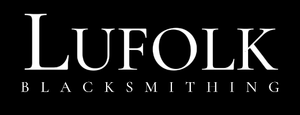Runes are more than just mysterious symbols found on ancient objects. They are an alphabet, a writing system used by Germanic peoples for centuries. This blog post will serve as a brief introduction to the world of runes, exploring their history, uses, and different variations.
What are Runes?
Runes are a set of symbols, each representing a sound. Unlike our modern alphabet, runes are not part of a single system but belong to different alphabets known as futharks. The name "futhark" comes from the first six runes in the Elder Futhark, the oldest known futhark.
There are several futharks, with the Elder Futhark (used from around the year zero to 800 AD) and the Younger Futhark (used from 800 AD to the 13th century) being the most well-known. The word "rune" itself translates to "secret" or "hidden wisdom," reflecting the potential use of runes for conveying confidential messages.
How Were Runes Used?
Runes were most commonly carved into wood, but due to wood's perishable nature, most surviving runes are found on stone or metal objects. Interestingly, even examples of runes written on birch bark, similar to ancient "post-it notes," have been discovered.
Deciphering runic inscriptions can be challenging. Runes could be written in various directions, including left to right, right to left, and even upside down. Additionally, there were secret runes and bind runes (multiple runes combined into one), further complicating the reading process.
Different Types of Runes
- Elder Futhark: The oldest futhark, consisting of 24 runes.
- Younger Futhark: A "simplification" of the Elder Futhark, containing only 16 runes. This is the futhark most commonly associated with Vikings.
- Medieval runes: A further development of the Younger Futhark, influenced by the Latin alphabet.
Other to mention:
- Dalrunor: Runes specific to the Dalarna region of Sweden, and the Anglo-Saxon futhark
Runes: A Window to the Past
Runes offer a valuable window into the past, allowing us to learn about the lives and experiences of ancient Germanic people. Many runes are found on rune stones, which serve as memorials rather than gravestones. These stones, often placed along roads, commemorated individuals or significant events.
Understanding runes can help us appreciate the rich history and diverse writing systems that have existed throughout human history.
Further Resources
If you're interested in learning more about runes, check out the following resource - "The Lufolk Rune Guide." A free guide exploring the futharks, rune uses, and individual rune meanings.
This blog post provides a basic introduction to the fascinating world of runes. With further exploration, you can delve deeper into this rich and complex topic and gain a deeper understanding of these ancient symbols.

